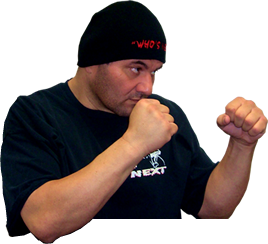Kajukenbo is A Hybrid martial art from Hawaii. Kajukenbo is the name the founders came up with to describe the various arts forms from which this style is derived. KA for Karate, JU for Judo and Jujitsu, KEN for Kenpo, and BO for Boxing. (Kajukenbo)
It was developed between 1947 and 1949 in the Palama Settlement on the Island of Oahu. The art was created through the efforts of five martial artists, each with a different specialty. They were Peter Choo, Frank Ordonez, Joe Holck, Goerge Chang and Sijo Adriano D. Emperado.
Adriano D. Emperado- Hawaiian Kenpo, Escrima
Joseph Holck- Judo, Jujitsu
Peter Choo- Tang Soo Do, Shotokan, and Boxing
Frank Ordonez- Jujitsu
Clarence Chang- Kung Fu, Boxing
In the late 1940s, the Palama Settlement was a very violent area. Due to this environment, the five founders came together with the goal of developing an art that would be practical and effective in a street fight. They sought to develop a style that would complement each of their individual styles and yet allow for effective fighting at a greater variety of ranges and speeds. In its conception, they followed a simple rule; if a technique worked consistently on the street (or against each other), then it stayed in the system. If it did not, then it was discarded. This allowed the style to maintain its self defense focus, while covering limitations found within each of their traditional arts. The training was notoriously brutal. Sijo Emperado had a motto “The workout isn’t over until I see blood on the floor.” He also believed that “the best teacher is pain.”
Kajukenbo has proved to be an improvement-based, continuously evolving and open form. Kajukenbo continues to evolve with each generation and maintains its primary focus on realism and practicality. There are no “unfair” moves or techniques in Kajukenbo. Every target on an attackers body is a “green light.” Kajukenbo training incorporates a blend of striking, joint locks, and weapons disarmament. The art is practiced all over the world in many different countries. Students are not taught to mimic their Instructors, but rather to develop their own expression of the art.
